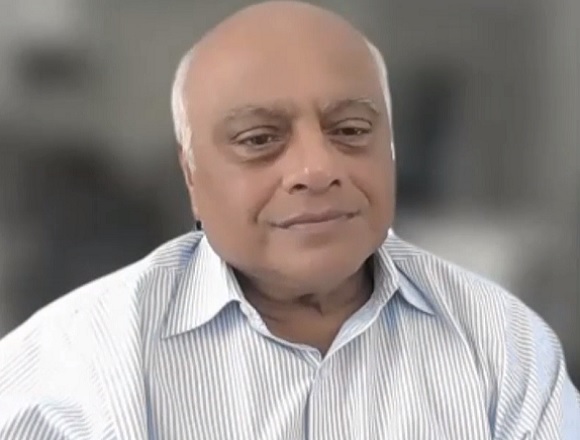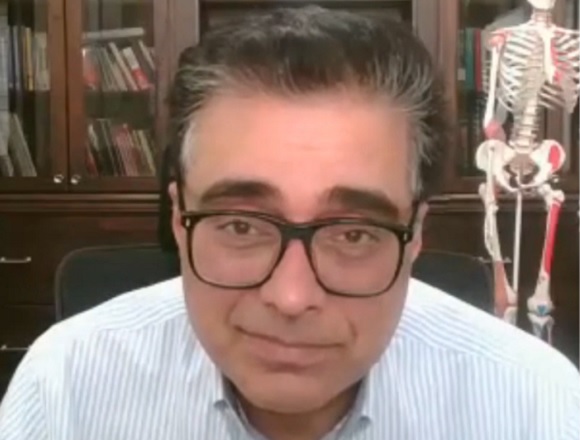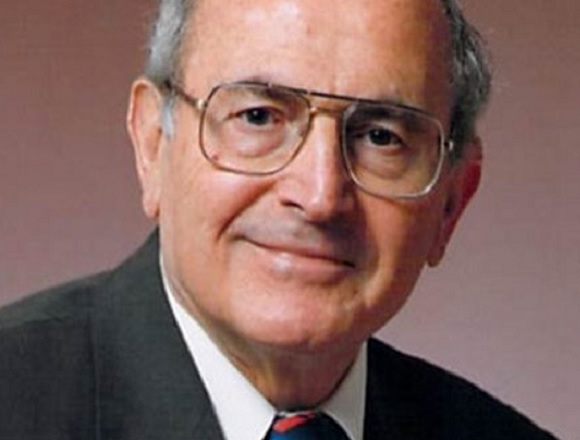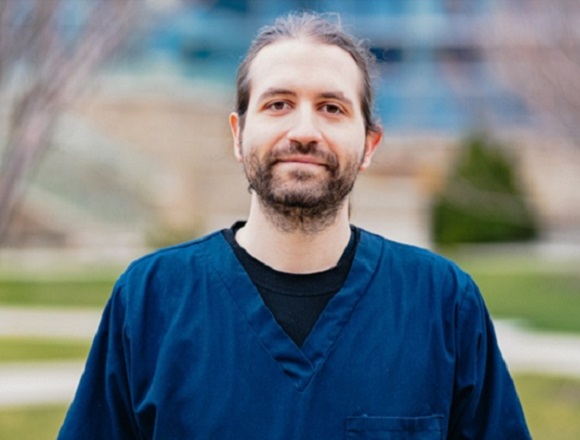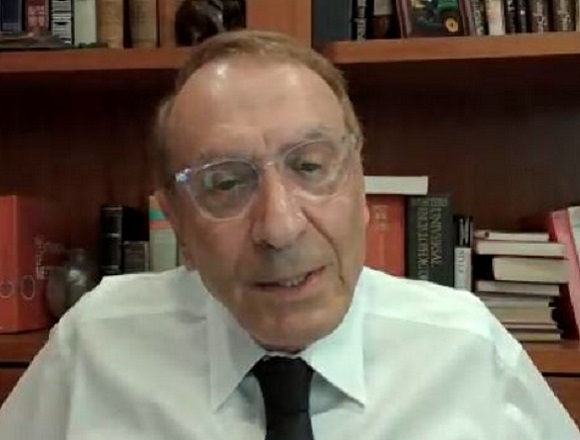Dr Jack Hirsh, professor emeritus of medicine at McMaster University, clinician and scientist specializing in anticoagulant therapy and thrombosis, and member of the Order of Canada, joins Dr Roman Jaeschke, critical care physician and methodologist, to discuss the place of acetylsalicylic acid (ASA) in thromboprophylaxis in the context of the latest research findings.
Contents
- Recent study on ASA for thromboprophylaxis
- Past and present: ASA in thromboprophylaxis
Transcript
Roman Jaeschke, MD, MSc: Good morning, welcome to another edition of McMaster Perspective. I have a pleasure and privilege to introduce Professor Emeritus Dr Jack Hirsh, who established the thromboembolism program at McMaster University and who through decades shaped the management of thromboembolism—not only in Canada but around the world. Thank you very much, Professor Hirsh.
I would like to start by saying that this interview was prompted by the paper that I will try to put on the screen now. This was the paper published 3 days ago [January 19, 2023] in the New England Journal of Medicine (NEJM), dealing with the use of aspirin for thromboprophylaxis (doi:10.1056/NEJMoa2205973). Professor Hirsh, maybe we will start with your general opinion and impressions of this paper.
Jack Hirsh, MD: What the paper showed was that in a group of patients who had a fracture, that of unspecified risk—but I will come back to this later, I think, [they were] of a relatively low risk—aspirin and low-molecular-weight heparin (LMWH) were associated with a very low mortality rate. There was noninferiority between aspirin and LMWH. I found the paper somewhat disappointing because when I read the title I thought I’d learn something, but I really didn’t learn very much at all. The average age of the patients was, I think, 45 [years], so it didn’t include many patients with fractured hip, which is the group that is most prone to getting or dying of postoperative pulmonary embolism, although we’ll come back to that.
So, my conclusion from that is that both aspirin and LMWH were associated with a very low mortality in what is probably a low-risk-for-thrombosis group of patients with a fracture. It doesn’t really tell us whether either aspirin or LMWH were actually effective in lowering mortality because we don’t know what the mortality would have been without any treatment.
Roman Jaeschke: In this case, if I understand correctly, they started with a probably very low–risk group, and we will not learn more until we have a possibility to look at high-risk subgroups, which probably exist. The question would be how many people belong to those groups. So, in a sense, in this very heterogeneous population there was no much difference between aspirin and LMWH, but if I understand [correctly], it does not inform us about what to do in high-risk groups. Is that an accurate reflection?
Jack Hirsh: There’s one other caveat, and that is that a number of studies have now shown that even in high-risk orthopedic patients, patients undergoing elective hip surgery, the mortality has fallen markedly over the last 30, 40 years, and it’s unlikely that that’s due to prophylaxis, because it’s fallen in all groups and it appears to be independent of prophylaxis. And it’s likely that a lot of it is due to improved preoperative, operative, and postoperative care. So, even in the higher-risk group mortality is very low. Therefore, it’s very difficult to interpret the low mortality in this group, which I think is a much lower-risk group than those undergoing elective hip surgery.
Roman Jaeschke: Certainly the speed of preoperative care and especially mobilization, very early mobilization of postoperative patients have dramatically changed what is the natural history of those people and maybe that’s part of the dropping mortality, which you alluded to. Professor Hirsh, you are in a unique position to talk about the background here, about the history of the use of aspirin in thromboprophylaxis. And I wonder if we could spend a few minutes on your reflection on that process.
Jack Hirsh: Sure, I’d be very happy to. The use of aspirin to prevent venous thrombosis has been an extremely controversial topic, I’d say, for 40 years. About 40 years ago some surgeons from Boston—it was actually Harris, that was his name—started treating his hip surgery patients, those undergoing surgery for fractured hips, with aspirin and this was criticized particularly by the thrombosis community, because at that time the dogma was that aspirin is effective in the prevention and possibly treatment of arterial thrombosis, because arterial thrombi are platelet rich, and that anticoagulants are effective in the treatment of venous thrombosis and prevention, because venous thrombosis consists mainly of fiber and red [blood] cells, and based on experimental animal studies this seemed to hold.
But then, more recently, I think... so the argument continued with people doing studies, which were markedly underpowered to show benefits or no benefits. And there was a certain cadre of orthopedic surgeons who used aspirin, and the recommendations from the American College of Chest Physicians (ACCP) and from most of the thrombosis experts were you should use some sort of anticoagulant: first it was warfarin, then it was low-dose heparin, and then LMWH, then fondaparinux, and now it’s the direct oral anticoagulants (DOACs).
The first study that really informed all this was a meta-analysis—the antiplatelet trials meta-analysis carried out from Peto’s group in Oxford. And that really shook the community in that what they showed in this meta-analysis was that aspirin was effective in hip fracture patients, which is one of the highest-risk groups for venous thromboembolism, with ~30% reduction in symptomatic venous thrombosis, ~50% reduction in all pulmonary embolism, and a substantial—I think 40%—reduction in what they called fatal pulmonary embolism. But their protocol indicated that the major outcome was total mortality—that was actually changed after they wrote that paper to mortality from... to fatal pulmonary embolism. In fact there was no reduction in total mortality and there was big debate and discussion of the paper. It seems so unlikely because there was an increase in other deaths. And some of these other deaths were stroke and myocardial infarction, so that went to the opposite direction. So, there was an equalization and no reduction in mortality.
Roman Jaeschke: I want to ask here, Dr Hirsh, was it aspirin use against no prophylaxis or was it, call it, regular prophylaxis, whatever it was, with aspirin added on in some patients?
Jack Hirsh: In the vast majority it was aspirin versus nothing.
Roman Jaeschke: Versus nothing. Okay.
Jack Hirsh: Yeah. And the puzzling thing about it was the failure to show a reduction in mortality.
Roman Jaeschke: Right.
Jack Hirsh: And then, soon after a study called the Pulmonary Embolism Prevention study (the acronym was PEP) was performed worldwide, actually again, from Oxford, although I think the lead author had gone back to New Zealand then, and it showed substantially the same results. And I’d like to just show table 1 and figure 3 of the PEP study (doi:10.1016/S0140-6736(00)02110-3).
Roman Jaeschke: So, here we have table 1. Do you see it on your screen?
Jack Hirsh: Yes. It was a large study and in this study physicians were allowed to continue patients on whatever form of prophylaxis they were on. So it was aspirin versus placebo on the background of usual care. But when I looked through things, it seemed that a minority of patients received other forms of prophylaxis and the results are substantially the same. If we just concentrate on the odds ratio in the right-hand column and start off with nonfatal vascular events, you can see ~1/3 reduction in venous thrombosis— this is symptomatic—and ~1/4 reduction in pulmonary embolism. But the other way, a 50% increase in myocardial infarction and a slight increase in stroke. Vascular death, defined by one out of these, was very much in favor of aspirin—there was a marked reduction in pulmonary embolism. But this was equalized by deaths from other causes. And then if we go to the bottom line here, all deaths on day 35, there was only a very minor reduction in death in the aspirin group with an odds ratio of 0.97. So this was much the same as the Antiplatelet Trialists’ Collaboration (APT) study and showed unequivocally that aspirin was effective in reducing symptomatic venous thromboembolism in hip fracture patients.
And then we jump forward to a very key study, I think a very key study, that was performed by P. J. Devereaux at McMaster, which had a completely different objective. The investigators were interested in determining whether super early operation versus the usual delay in operation in hip fracture would improve outcomes. In other words, if you operated early, other things being equal, would outcomes be improved? Well, outcomes would improve. But it was a large study and what they showed was that pulmonary embolism was a very uncommon cause of death. By far the most common causes of death were cardiovascular and stroke. It’s made us rethink the importance of pulmonary embolism as a cause of death in the most thrombogenic of orthopedic operations. And again, hip fracture patients are treated a lot differently now than they were when... I can remember writing 40 years ago that 10% of patients undergoing hip fracture died from pulmonary embolism. That’s clearly not the case. They did then, but those patients would lie in bed perhaps for 3 or 4 days. Some would never get surgery. And there was often a delay in surgery. Physiotherapy wasn’t the same. So the advances in surgical care have made a huge difference to the risk of postoperative venous thromboembolism, even this very high–risk group.
Roman Jaeschke: Let me share the screen to illustrate what you were just saying here, if I got it right. So what you are saying is that a number of decades ago 10% of people after hip fracture would die. So from 6000 we would expect 600. These days we have markedly less than 10% of what would be expected at that time, because we have, frankly, quite a minimal number of deaths—1% here is 66. So that’s about 0.3% versus 0.6%. So the deaths dropped.
Jack Hirsh: That was 20 years ago. And in the figure for the most recent study... large study, which is the study by Devereaux, the deaths from pulmonary embolism are even lower.
Roman Jaeschke: Even lower than that…
Jack Hirsh: Even lower. And they’ve continued to drop. If you look longitudinally over the studies…
Roman Jaeschke: Professor Hirsh, you already said that this new study from NEJM is not necessarily informative unless we get more information about subgroups. I did an informal survey of what we do in Hamilton these days for high-risk orthopedic surgeries, both fractures and major joint replacement, and all I heard was LMWH, fondaparinux, or DOACs. Where do you think aspirin fits into this at the moment and what other information do we need to change the practice, if at all?
Jack Hirsh: I’ll answer your question indirectly. I think that there are lots and lots of surgeons, particularly in the United States and also in Great Britain, who use aspirin as the only form of prophylaxis in patients undergoing elective hip surgery and fractured hip surgery. I think that’s perfectly reasonable. It’s crept into the recommendations, including the ones by the ACCP. They accept aspirin as a reasonable form of prophylaxis. I think that the likelihood, if you look at the totality of all the evidence, is that an oral anticoagulant... I wouldn’t use fondaparinux or LMWH, I’d just use a DOAC. So if you’re going to use an anticoagulant, use a DOAC. It’s likely that the DOAC is more effective than aspirin.
There’s other indirect evidence that it is more effective than aspirin, and that indirect evidence comes from atrial fibrillation, where the mechanism of thrombosis is similar to the mechanism of thrombosis in venous thrombosis, and in the studies in which aspirin was compared with an anticoagulant, aspirin produced ~40% reduction in stroke, whereas the anticoagulant produced ~70% reduction in stroke. So, anticoagulants are likely to be better than aspirin in all of the randomized trials, but in the vast majority bleeding was no different between aspirin and oral anticoagulants. So it is perfectly reasonable to be treated with a DOAC prophylactically.
I had elective hip surgery about 7 years ago. It’s likely that I’m going to have the other hip done fairly soon. I think I’ll be treated with a DOAC and I’m perfectly comfortable with it. I mean, I don’t make the choice, the surgeon makes the choice, I couldn’t have a say, obviously. But I think that those people… because it [DOAC] is likely to be bit better. It probably produces more bleeding long term than aspirin out in the community under controlled conditions and in selected patients. It hasn’t seemed to, but it’s very likely that it would produce a little bit more bleeding than aspirin. But I think either is perfectly reasonable, I don’t see any point now in using the injectables.
Roman Jaeschke: So, if your surgeon were to tell you, “Okay, we’ll give you aspirin,” would you accept it as well?
Jack Hirsh: Yes.
Roman Jaeschke: Okay. Well, that’s shaking the established dogma, so that’s great. At least here in Hamilton. This is good to hear. Let me understand, however…
Jack Hirsh: Can I say something? This is completely emotional gut feeling. I’m happier having a DOAC than aspirin. If my surgeon said, “I insist, I will only operate and give you aspirin,” I wouldn’t argue, but I know that I’ll have this done in Hamilton Hospital and they’ll use a DOAC. So, you know, it’s one thing saying what you’d accept and [another] what you’d like. I’d rather have a DOAC.
Roman Jaeschke: So, in the language of GRADE, you would say both are acceptable but one would be preferable.
Jack Hirsh: Yeah. One would be preferable to me because [there is] one in a thousand chance that I develop a clot that could cause fatal pulmonary embolism, I think a DOAC is more likely to prevent the embolism than aspirin, but the risk is low.
Roman Jaeschke: So we end up in the full circle saying that this particular paper does not provide us with new evidence to address that precise question of highest thromboembolism risk procedures.
Jack Hirsh: Yes. I mean, I think... The other huge advantage of either aspirin or a DOAC over the injectables is there is pretty good evidence the risk continues after discharge from hospital. Patients are now being discharged from the hospital... some are being discharged on the same day after elective hip surgery and most of them stay for a couple of days. The risk of thromboembolism continues after discharge from hospital. So it’s just so much more convenient to use an oral antithrombotic than injectable one.
Roman Jaeschke: That, in the end, as a commentary to this particular paper, is very useful. I’m reassured that we don’t have to change the practice yet and I appreciate all the issues which you raised, Professor Hirsh. As I said, you are in a unique position to know not what’s happened in the last 2 years of publications, but in the last 40, and I hope our listeners and users will appreciate it as well. Thank you so much.
Jack Hirsh: Actually, Roman, in fact, I came to McMaster 53 years ago. And that’s when we started this whole program: 53 years. A lot of the listeners weren’t born then.
Roman Jaeschke: I appreciate in life more and more what I would call institutional memory, which you obviously do have. Thank you so much and I hope we’ll see again.
Jack Hirsh: Okay. Thank you, Roman. Bye.
 English
English
 Español
Español
 українська
українська



